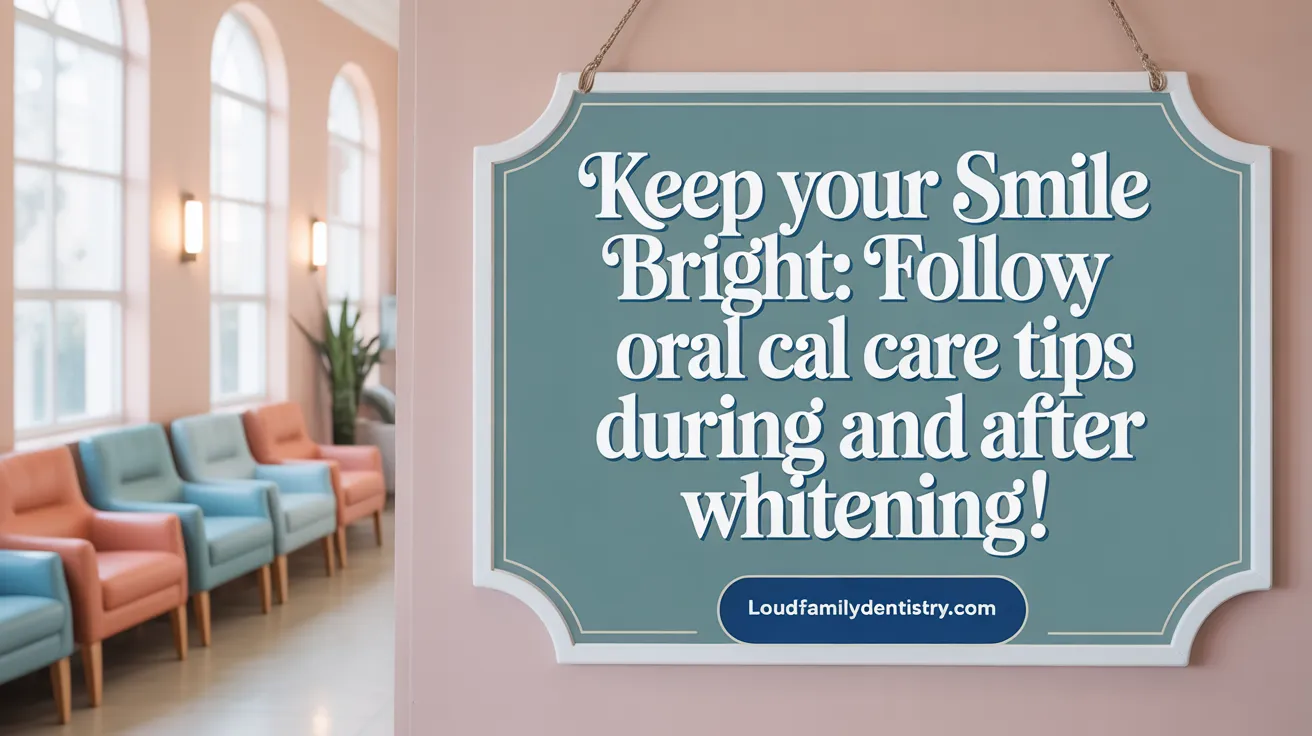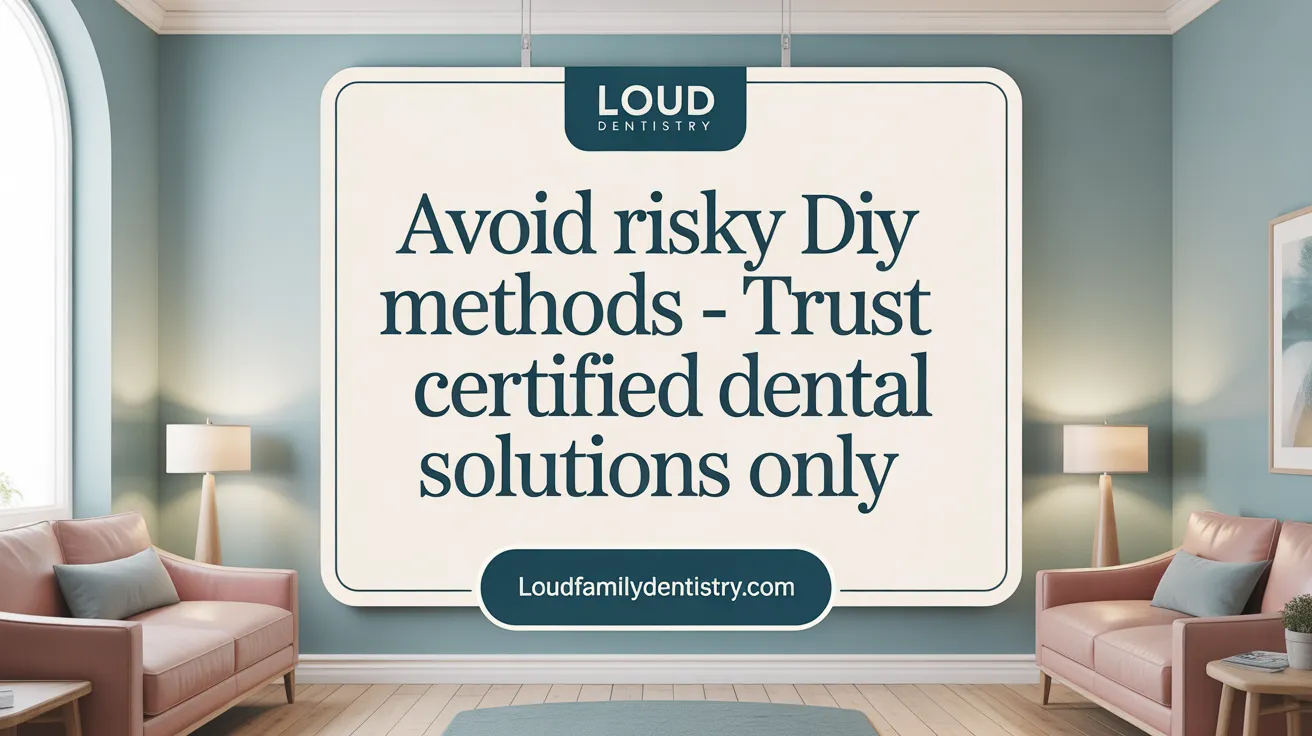Understanding Teeth Whitening: Safety Meets Effectiveness
Achieving a whiter, brighter smile is a common cosmetic goal, but it is essential to approach teeth whitening with trusted methods that prioritize safety as well as results. Whether considering professional procedures or at-home products, knowing the differences, risks, and maintenance tips can help you choose the best path to a healthier, radiant smile. This article explores safe and effective teeth whitening methods, natural remedies, and expert advice to guide your decisions for lasting confidence.
Safe and Effective Teeth Whitening Methods
What are the safest and most effective teeth whitening methods?
The most reliable and safest options for teeth whitening are professional in-office treatments conducted by dental professionals. Techniques like Zoom! laser whitening can whiten teeth by up to eight shades in a single session, offering quick and visible results. These treatments use higher concentrations of bleaching agents such as hydrogen peroxide, activated safely with special lights. Dentists carefully monitor the procedure, protecting gums and surrounding tissues to prevent burns or sensitivity. The results from professional whitening typically last around 1.5 years, though they can vary depending on habits and maintenance.
Over-the-counter whitening products, including ADA-approved whitening toothpaste, gels, and strips, are designed for convenience and safety. These contain lower concentrations of peroxide and include options to help maintain whiteness over time. However, their bleaching effects are usually modest, often providing only a shade or two of whitening. These products are considered safe when used as directed but may cause temporary tooth sensitivity or gum irritation in some cases.
For those with heavily stained or damaged teeth that do not respond well to bleaching, porcelain veneers and crowns offer durable cosmetic solutions. These restorations are custom-made to match natural teeth, resistant to staining, and can dramatically improve appearance. While more costly and invasive, they provide a long-term aesthetic benefit especially when whitening alone isn't effective.
Why is a dental consultation important?
Consulting with a dental professional before choosing a whitening method is crucial. A dentist can evaluate your oral health, identify any underlying issues such as cavities or gum disease, and recommend the safest and most suitable treatment. They can also advise on managing any existing restorations, as whitening does not affect crowns or veneers.
Professional guidance helps prevent adverse effects like increased sensitivity or damage to enamel. Moreover, a dental check-up ensures that whitening is appropriate based on personal and dental conditions. Overall, consulting with an expert ensures that you achieve a brighter smile safely and effectively, tailored specifically to your needs.
Comparing Professional and At-Home Whitening Treatments

What is the difference between professional and at-home teeth whitening treatments?
Professional teeth whitening treatments are performed in dental clinics or by qualified dentists, offering faster and more dramatic results. These procedures typically use higher concentrations of bleaching agents, such as hydrogen peroxide or carbamide peroxide, which can dramatically lighten teeth in a single or a few sessions. For example, some in-office treatments can lighten teeth by up to 10 shades in just one visit.
At-home whitening options include products like custom-fitted trays, whitening strips, gels, and natural remedies. These are usually more affordable and easier to use, allowing individuals to whiten their teeth at their own pace over several weeks. The peroxide concentrations in these products are lower than in professional treatments, which means they may take longer—often around two weeks—to show significant results.
Treatment speed and effectiveness
In-office whitening provides immediate and noticeable results, making it popular for quick aesthetic improvements. The high concentration of bleaching agents, combined with special lighting or laser activation, accelerates the whitening process.
At-home treatments, while effective over time, generally produce more gradual results. The effectiveness depends on proper use and consistency, with professional advice recommended for the best outcomes.
Safety and supervision differences
Professional treatments take place under dental supervision, reducing risks such as gum irritation or uneven whitening. Dentists ensure the safety of the procedure, use controlled bleaching concentrations, and check for oral health issues before treatment.
Over-the-counter products, like whitening strips and toothpastes, are self-administered. If misused or used improperly, they can cause increased tooth sensitivity or gum irritation. Products with the ADA Seal of Acceptance are tested and verified for safety, but over-the-counter options generally do not undergo the same rigorous testing.
Aftercare and maintenance recommendations
After professional whitening, dentists often advise avoiding stain-causing foods and drinks like coffee, tea, and red wine for at least 48 hours. Maintaining good oral habits, using whitening toothpaste, and practicing proper oral hygiene are essential to prolong results.
For at-home whitening, consistent use of the recommended products is vital. Regular touch-ups with whitening strips or toothpaste can help maintain the brightness, though some fading over time is normal. Dietary adjustments and quitting smoking further support the longevity of whitening effects.
| Aspect | Professional Treatment | At-Home Treatment | Details |
|---|---|---|---|
| Speed | Rapid, within one appointment | Several weeks | Speed depends on treatment type and concentration |
| Effectiveness | Up to 10 shades lighter in one visit | Lightening up to 3-8 shades over time | Effectiveness varies by individual and product |
| Cost | Higher expense | More affordable | Cost varies based on treatment type |
| Safety | Supervised by dentist | Self-administered, riskier if misused | Supervision ensures safety and proper use |
| Maintenance | Follow-up care recommended | Ongoing routine care | To prolong results and reduce sensitivity |
Safety Considerations and Precautions When Whitening Teeth
What safety considerations and precautions should be taken when whitening teeth?
When considering teeth whitening, safety is paramount. Patients should prioritize products that carry the American Dental Association (ADA) Seal of Acceptance. This seal guarantees that the product has undergone rigorous testing for safety and efficacy. Use of products with appropriate peroxide concentrations, such as hydrogen peroxide or carbamide peroxide, helps prevent damage to enamel and reduces the risk of sensitivity.
Consultation with a dental professional before starting any whitening treatment is highly recommended. Dentists can evaluate the health of your teeth and gums, identify underlying issues, and recommend the safest and most effective whitening options tailored to your needs. This is especially important for individuals with dental restorations, sensitive teeth, or existing dental conditions.
To manage potential side effects like tooth sensitivity and gum irritation, it’s advisable to use lower peroxide concentrations, follow the instructions carefully, and avoid overusing whitening products. Taking breaks between treatments and using desensitizing toothpaste or fluoride treatments can help minimize discomfort.
Avoiding unsafe or unproven methods, such as over-the-counter whitening kits lacking regulation or natural remedies without scientific support, is essential. These methods may cause enamel erosion, burns, or other damage. Additionally, maintaining good oral hygiene, including regular brushing, flossing, and dental checkups, supports safe whitening efforts.
Limiting the intake of foods and beverages that stain teeth—such as coffee, tea, red wine, and certain berries—helps preserve whitening results. Proper dietary and lifestyle habits, combined with professional guidance, ensure that teeth whitening is both safe and effective.
Selecting Trustworthy and Safe Teeth Whitening Options

How can one select trustworthy and safe teeth whitening options?
When considering teeth whitening treatments, it is essential to choose options that are both safe and effective. The American Dental Association (ADA) Seal of Acceptance serves as a reliable indicator that a product has been tested for safety and efficacy. Always look for products bearing this seal when purchasing over-the-counter whitening toothpaste or gels.
Consultation with a dental professional is highly recommended before starting any whitening regimen. Dentists can evaluate your dental health, identify any underlying issues such as cavities or gum disease, and recommend the most suitable treatment based on your needs. They can also inform you about the potential risks, such as sensitivity or irritation, and tailor options accordingly.
Verify the ingredients and concentrations in whitening products. The most proven agents are peroxide-based, such as hydrogen peroxide or carbamide peroxide, used within safe limits. Overuse or high concentrations can lead to tooth sensitivity or damage. Custom-fitted whitening trays from a dentist ensure proper application and minimize risks.
Avoid unregulated or DIY products that lack scientific validation. Be cautious with natural remedies or products without official approval, as these might be ineffective or damaging. Following the instructions carefully, whether for in-office treatments or at-home kits, is vital to prevent overuse.
In addition to choosing appropriate products, maintaining good oral hygiene, reducing stain-causing foods and habits, and seeking professional advice regularly contribute to safe and lasting whitening results.
In summary, the best way to select trustworthy teeth whitening options is by consulting dental professionals, opting for ADA-approved products, monitoring ingredient safety, and avoiding risky, unapproved remedies. This approach ensures a brighter smile without compromising dental health.
Exploring Natural and DIY Teeth Whitening Remedies
What natural and DIY remedies are available for teeth whitening, and are they effective?
Many prefer natural and do-it-yourself options for teeth whitening, often seeking a more affordable or chemical-free approach. Common natural remedies include oil pulling with coconut oil, baking soda combined with peroxide, and using acids like apple cider vinegar or citrus peels.
Oil pulling involves swishing a tablespoon of coconut oil or other edible oils such as sesame or sunflower oil in the mouth for about 10-20 minutes. This technique is believed to reduce bacteria, plaque, and improve gum health. While it can help with overall oral hygiene, scientific evidence supporting its direct whitening effect is limited.
Baking soda mixed with peroxide is an accessible method, often used as a homemade toothpaste or paste. Baking soda is mildly abrasive and can help scrub surface stains, while peroxide acts as a natural bleaching agent. When used regularly over approximately six weeks, this combination has been shown to lighten teeth effectively.
Another natural idea involves applying small amounts of apple cider vinegar or citrus peels like lemon or orange. These acids may help break down superficial stains due to their mildly abrasive and chemical properties. However, citrus acids are highly erosive and can damage enamel if used excessively or improperly.
Activated charcoal has gained popularity for its ability to absorb impurities and stains caused by surface discoloration. It works by binding to stain molecules on the teeth, assisting in their removal. Despite its absorbent properties, activated charcoal can be too abrasive if used aggressively or frequently, risking enamel erosion.
Overall, these natural and DIY treatments may offer some surface stain removal or lightening, but their outcomes tend to be less predictable and less dramatic compared to professional whitening procedures or FDA-approved over-the-counter products. Natural remedies may also carry risks, especially if used excessively, such as enamel erosion or increased sensitivity.
Before trying any natural whitening method, it is wise to consult with a dental professional. A dentist can advise on safe practices, determine the cause of discoloration, and recommend the most effective and safe whitening options suited for individual needs.
For more detailed information, searching for "natural DIY teeth whitening remedies and their effectiveness" can provide further insights and recent research updates.
Understanding Common Causes of Tooth Discoloration and Prevention
What are common causes of tooth discoloration and how can they be prevented?
Tooth discoloration can stem from various causes, which are generally categorized into extrinsic and intrinsic factors.
Extrinsic discoloration occurs on the outer surface of teeth and is mainly caused by the consumption of stain-causing foods and drinks such as coffee, tea, red wine, colas, berries, and certain fruits. Tobacco use, including smoking and chewing tobacco, also contributes significantly to staining the enamel. These external factors can be effectively managed through good oral hygiene practices and lifestyle modifications.
Intrinsic discoloration originates from within the tooth and can be influenced by aging, medication use (like tetracycline during childhood), trauma, deep dental decay, excess fluoride intake during tooth development, or genetic conditions affecting enamel quality. These internal changes are more resistant to conventional cleaning and often require professional whitening treatments.
Poor oral hygiene accelerates staining by allowing plaque and tartar buildup, which trap pigments and deepen discoloration.
Prevention strategies include maintaining consistent oral care routines—brushing at least twice daily with fluoride toothpaste, flossing daily, and regular dental checkups. Using a straw when drinking staining beverages minimizes direct contact with teeth, and quitting smoking can prevent both surface and internal stains.
Professional cleanings help remove plaque and tartar deposits before they stain or cause further discoloration. Incorporating whitening toothpaste containing gentle abrasives may also help manage surface stains. For persistent discoloration, consulting with a dentist is advisable to explore effective whitening options tailored to individual needs.
Overall, adopting a preventive approach by avoiding known staining agents, practicing excellent oral hygiene, and seeking professional advice ensures the best chance of maintaining a bright, healthy smile.
Maintaining Dental Health During and After Whitening Treatments

What tips can help maintain dental health during and after teeth whitening treatments?
To keep your smile bright and your teeth healthy following whitening procedures, establishing good oral hygiene habits is crucial. Regular brushing twice daily with fluoride toothpaste helps remove plaque and surface stains, while flossing clears debris from between teeth. Using a soft-bristled toothbrush minimizes gum irritation.
Avoid consuming stain-causing foods and drinks such as coffee, tea, red wine, dark berries, and soy sauces. If you do indulge, using a straw can help reduce direct contact of these agents with your teeth. Rinsing your mouth with water afterward can wash away residual staining substances.
In the initial 48 to 72 hours after whitening, stick to a "white diet"—foods that are light-colored and low in acidity, like plain yogurt, chicken, and steamed vegetables—to avoid undoing your whitening efforts.
Refrain from smoking or using tobacco products, as these can quickly stain teeth and diminish your whitening results.
Staying well-hydrated by drinking plenty of water is beneficial not only for overall health but also for oral health. Water helps wash away food particles and neutralizes acids produced by bacteria.
Regular dental visits are equally important; professional cleanings remove tartar and surface stains that are difficult to eliminate at home. Dentists can also monitor for sensitivity issues and give personalized advice to sustain your bright smile.
By adhering to these practices, you will support your dental health during and after whitening treatments, ensuring long-lasting, radiant results.
Warnings Against Unsafe and Unproven Teeth Whitening Products or Methods

What are the warnings against unsafe or unproven teeth whitening products or methods?
Using teeth whitening products or methods without proper guidance can pose significant risks to oral health. It is crucial to avoid unapproved, homemade, or DIY solutions that often contain harsh or abrasive chemicals. For example, lemon juice, baking soda, and unregulated hydrogen peroxide are commonly used in ineffective and potentially damaging home remedies.
These unverified methods can lead to enamel erosion, increased tooth sensitivity, and gum irritation. Overuse or improper application of bleaching agents like hydrogen peroxide or carbamide peroxide can heighten these risks, causing burns, microstructural damage, and even irreversible harm if not used correctly.
The risk becomes even greater when purchasing whitening products online or from unregulated sources, where the ingredients' concentrations may be dangerously high. Such products might contain excessive bleaching agents, resulting in severe health issues.
Guidelines from reputable organizations like the American Dental Association highlight the importance of using products bearing the ADA Seal of Acceptance, ensuring safety and efficacy. Consultation with a dental professional before starting any whitening procedure is essential to assess individual risks and select appropriate treatments.
In conclusion, unregulated and homemade whitening remedies are unsafe and often ineffective. Relying on professional advice and approved products helps prevent damage, ensuring both safety and better results for your smile.
The Role of Cosmetic Dentistry in Teeth Whitening

Professional whitening technologies
Cosmetic dentistry offers advanced whitening procedures that are faster and more effective than over-the-counter options. Dentists use controlled concentrations of bleaching agents like hydrogen peroxide or carbamide peroxide, often applied with specialized light or laser activation to enhance results. These treatments can lighten teeth by up to eight shades in just a single session, making them a popular choice for those seeking instant, noticeable improvements.
Custom-fitted trays and bleaching gels
A common at-home option provided by dentists involves custom-fitted trays filled with professional-grade bleaching gels. These trays fit snugly over the teeth, ensuring even application and reducing the risk of gum irritation. Using these trays for about two to three weeks can produce significant whitening results, which typically last around two years with proper care.
Veneers and crowns as alternatives
While whitening treatments work well for natural teeth, they are ineffective on dental restorations such as crowns, bridges, or veneers. For heavily discolored or damaged teeth, cosmetic options like veneers—thin shells bonded to the front surface of teeth—or crowns may be recommended. These offer a permanent solution, providing both aesthetic appeal and durability, especially when whitening alone cannot achieve the desired look.
Longevity and maintenance of results
Results from professional treatments can be long-lasting, often several years, but they are not permanent. Factors like aging, diet, and lifestyle habits influence tooth color over time. To maintain brightness, regular dental checkups, good oral hygiene, avoiding stain-causing foods and drinks, and periodic touch-up treatments are advised. This ongoing care ensures that your bright, healthy smile endures as long as possible.
| Treatment Type | Duration | Typical Results | Maintenance Tips | Cost Range |
|---|---|---|---|---|
| In-office whitening | 30-60 min | Up to 8 shades lighter | Good oral hygiene, limit staining foods | $300-$1,000 |
| Custom trays and gels | 2-3 weeks | 3-8 shades lighter | Routine cleaning, avoid stain foods | $250-$600 |
| Veneers/crowns | Permanent | Immediately change color | Regular dental visits | $800-$2,500 per tooth |
Cost, effectiveness, and longevity should be discussed with a dental professional to determine the best personalized whitening plan.
Achieving a Radiant Smile Safely and Effectively
Whitening your teeth is a highly sought-after cosmetic enhancement that can boost confidence and promote a healthier appearance. With numerous safe and effective options—from professional dental treatments to carefully selected over-the-counter products and natural methods—it's vital to assess individual dental health and seek expert guidance. Understanding the differences between treatments, associated risks, and necessary maintenance helps ensure optimal results while protecting your smile's integrity. Remember, consultation with a dental professional remains the cornerstone of safe whitening, helping you choose the best approach tailored to your needs and preserving your radiant, healthy smile for years to come.
References
- Mayo Clinic Q and A: Many safe choices available to help whiten teeth
- Want whiter teeth? Tips for effective and safe teeth whitening
- Teeth Whitening Strips, Gels, Toothpaste, Bleaching, and More
- The safest way to get a whiter smile
- 7 dentist-approved tips to safely whiten your teeth - News
- Tooth Whitening: What We Now Know - PMC
- The Best Way to Whiten Your Teeth - Aspen Dental
